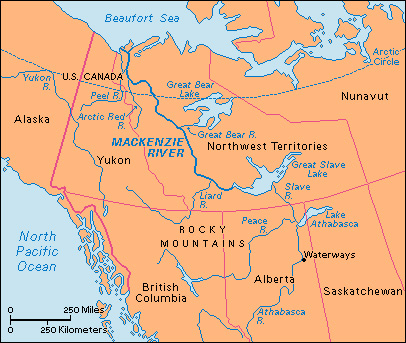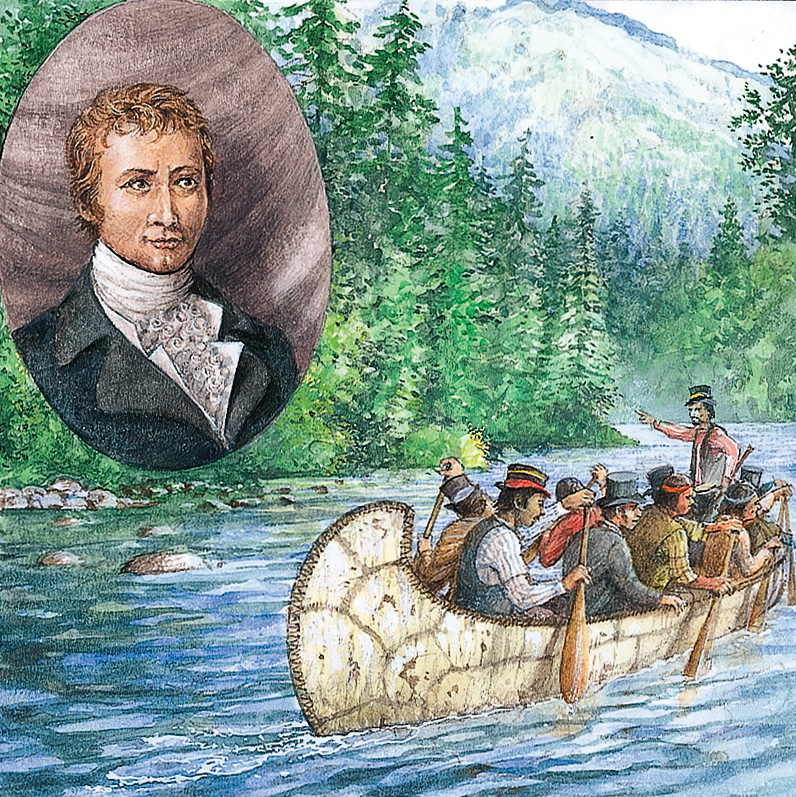Mackenzie River, in the Northwest Territories, is the longest river in Canada. It flows north and west for about 1,100 miles (1,770 kilometers) from Great Slave Lake to the Beaufort Sea. Much of the river is more than 1 mile (1.6 kilometers) wide. Water flows into the Mackenzie from many tributaries, including the Liard, Great Bear, Arctic Red, and Peel rivers. Water also enters from Great Slave Lake. It reaches the lake through the Slave River, which collects water from the Peace and Athabasca rivers. The Mackenzie was named for the Canadian explorer Sir Alexander Mackenzie (see Mackenzie, Sir Alexander ).

All the rivers mentioned above are part of the Mackenzie River System, Canada’s largest river system. This vast system drains water from about 682,000 square miles (1,766,000 square kilometers). Its most distant water source is high in the Omineca Mountains of north-central British Columbia, 2,635 miles (4,241 kilometers) from the Arctic mouth of the Mackenzie. In North America, only the Mississippi-Missouri system in the United States is longer than the Mackenzie system.
Barges carry cargo over much of the Mackenzie River system. The Mackenzie River basin is rich in natural resources. The Peace River area of Alberta and British Columbia includes abundant farmland. The area also has petroleum and natural gas deposits and water for hydroelectric power.

In the northern part of the Mackenzie basin, the delta at the mouth of the river is a muskrat-trapping area. Hundreds of thousands of ducks, geese, swans, and cranes migrate to nesting grounds in the Mackenzie delta annually. The delta has little agriculture, but the region has important deposits of petroleum, radium, and uranium.
